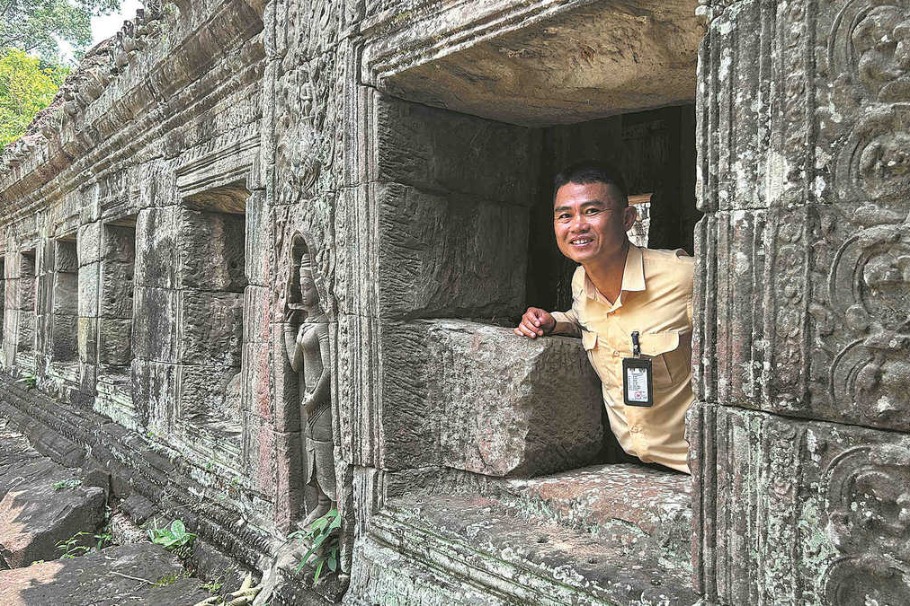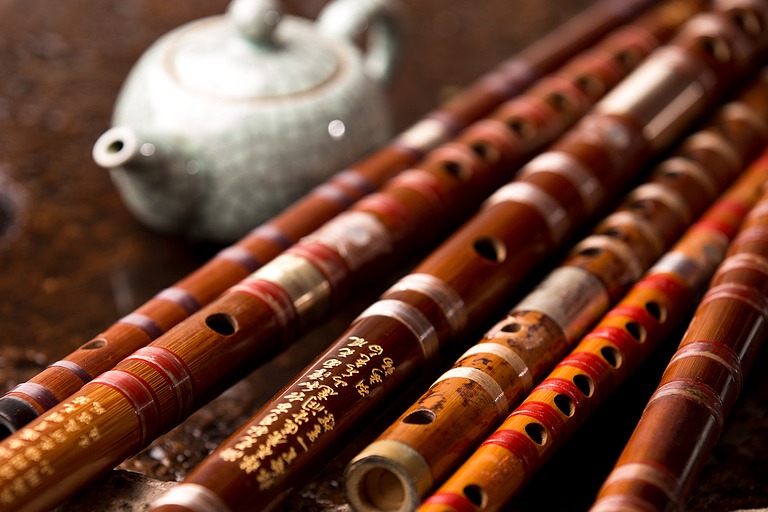Guided by blood ties and twists of the tongue


Tour guides are among the few experts who can decipher the hidden messages inscribed on the stone walls of the temples in Angkor Archaeological Park, the UNESCO World Heritage site in dense forest in northwestern Cambodia.
Over the past 20 years, Lam Bun Pa, 42, has explored nearly every corner of the historical sites in the country's Siem Reap Province. Lam, a Cambodian tour guide who speaks Mandarin, said that one of the most popular sites among Chinese tourists is the Bayon temple, built at the end of the 12th century.
He points to one of the carvings on its outer wall depicting a naval battle between the Cambodian ancestors of the Khmers and Chams, another ancient group from a once-powerful Hindu-Buddhist kingdom that at one stage thrived in what is now central and southern Vietnam.
"The carvings also illustrated images of reinforcements from China in the Han Dynasty (206 BC-AD 220) that were widely believed to have come to help the Khmers. Unlike the Khmers, who usually rode elephants and had long pierced ears, the Chinese rode on horses with a sort of goatee on the chin and a chignon on their head," he said.
"The carving demonstrates a friendship between Cambodia and China that goes back to the 12th century, and many Chinese tourists are highly impressed with the vivid details on each figure."
Lam said that before the pandemic he served about 150 Chinese tourists a month.
Recalling his career as a tour guide starting 22 years ago, he said that learning Mandarin was the crucial step in his journey. However, it was his parents who steered him in that direction, thinking that having language skills would be a key advantage for survival in times of turbulence.
Lam's grandparents were from Guangdong province and fled to Siem Reap during the 1940s. Lam's father later married a Cambodian, and her French language skills helped support the family in the 1970s.
"My mother made a living by translating instructions for medicines and other daily supplies imported from France into the Khmer language. She insisted that learning French may be a lifesaving skill that I should also acquire. However, because I'm half Chinese my father wanted me to study Mandarin.
Mandarin class
"My parents finally decided to send me to Mandarin class because I have Chinese blood. … They said I would always be a foreigner in France with an Asian face. That's how the final decision was made."
However, learning Mandarin was difficult, one reason being that few people in Cambodia in the 1990s studied it.
Apart from hours of Mandarin class in primary school, Lam's father bought a cable TV subscription that broadcast news about China in Mandarin.
"I remember my father would go to a coffee shop every day where people from his hometown gathered and shared information. He was always the last one to leave because the coffee shop subscribed to a Chinese newspaper, which he usually brought back for me to read."
Thanks to Lam's Mandarin skills, he now earns a good living working as a tour guide, and sometimes as an interpreter for delegations from China. Over the years he has also served thousands of Chinese travelers.
"Chinese tourists are very generous, always buying souvenirs, something that helps locals. In big tour groups with Chinese, the atmosphere is always lively and full of laughter."
Lam said he hopes that the number of Chinese visitors will return to pre-pandemic levels.
Tourism is one of the pillar industries that supports Cambodia's economy. Last year 848,952 Chinese visited the country as tourists, 55 percent more than in 2023, Cambodia's Ministry of Tourism said. China was the third-largest source of foreign holidaymakers to the country after Thailand and Vietnam, it said.
Collaborative efforts
In a recent interview with local media, Thourn Sinan, chairman of the Pacific Asia Travel Association Cambodia chapter, forecast that the number of Chinese tourists visiting the country would continue to rise this year.
"I believe that with collaborative efforts between the governments, the private sector and the Chinese embassy in Cambodia, we can expect a gradual increase in Chinese tourist arrivals."
Lam, who has traveled to China several times, said he hopes that eventually there will be high-speed rail connectivity between China and Cambodia.
"The China-Lao Railway has boosted economic growth and cross-border tourism. People in Cambodia look forward to such a connection that benefits us. China and Cambodia enjoy deep connections that go beyond the economy to culture and history. I really look forward to visiting more historical sites in China as transport links improve."
yangwanli@chinadaily.com.cn

































